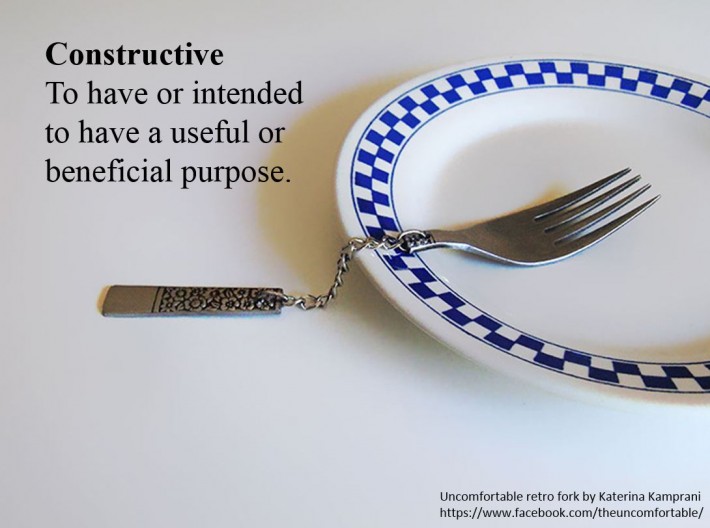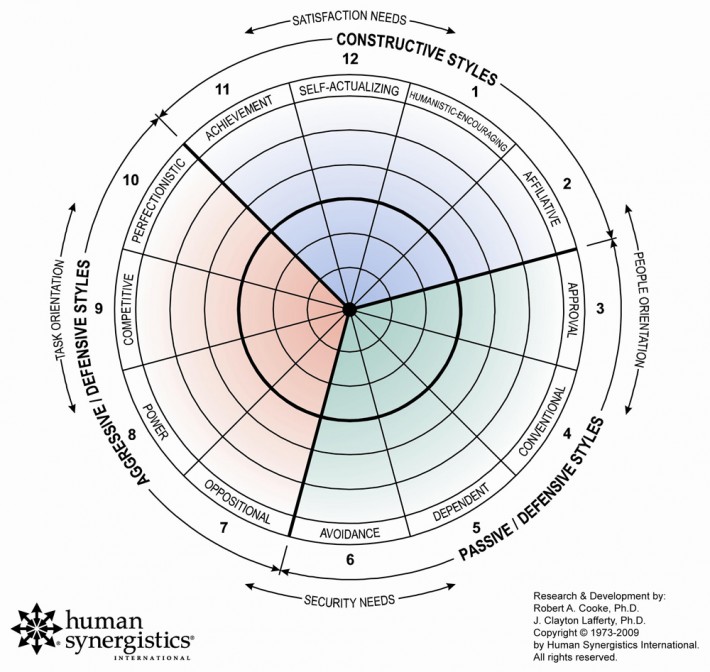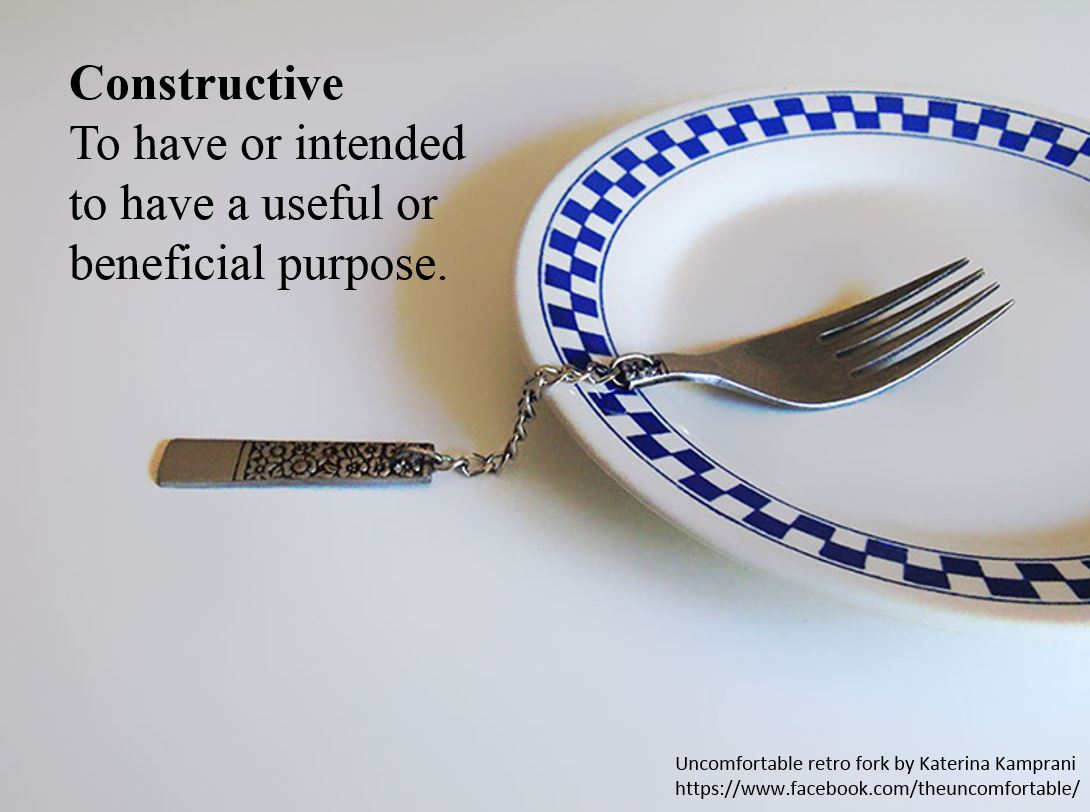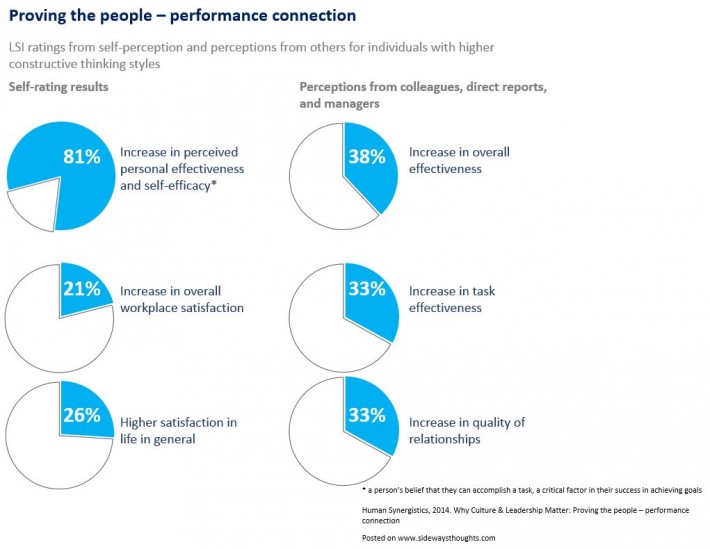How are our thoughts serving us? An explanation from the Life Styles Inventory

She lets loose a barely audible mutter under her breath.
“What did you say?” he asks with a notable tone of anger, daring her to respond.
“Nothing” she replies as she stomps off in a huff.
Each person in the example above is displaying behaviours that are meeting their needs. But are the behaviours the most effective way to get either person’s desired outcome?
You would think that after a lifetime of practice, our thoughts, conversations, and behaviours would be constructive. In other words, that our responses would be useful and beneficial.
Yet we know this is not always the case. We think, say, and do things that are not all that helpful and can limit us from getting where we feel we need to be. We can even get into habits of thinking, saying, and doing these unhelpful things over, and over, and over again.
Why is it that we maintain habitual responses that are not useful? Centuries of research in fields of psychology, philosophy and theology have developed a myriad of responses to this question.
The Life Styles Inventory (LSI) by Human Synergistics is one such approach that shows promise. Developed around 50 years ago and used by millions of participants, the LSI gives an insight into why our responses are not always beneficial as well as a clear description of what a constructive response looks like.
The Life Styles Inventory

The Life Styles Inventory, or LSI, is a model that describes our thoughts and behaviours using twelve styles positioned on what is referred to as a Circumplex. These styles are grouped into three colour-coded categories: red for aggressive, green for passive, and blue for constructive.
The aggressive and passive styles that are positioned towards the bottom of the Circumplex are defensive, meaning we often use these styles based on a need to feel safe and secure. These styles are learned through our lives and develop into habitual responses. The greater the need for security, such as when we are under stress, the more intense the defensive thoughts and behaviours may be.
This stress triggers our innate fight-or-flight responses to help us survive in contemporary society. Most of us are not trying to survive on the Serengeti, but we still face modern day attacking lions in the form of meeting someone we feel is attractive, being presented with a career advancement opportunity, or facing a job loss – all highlighting our needs for procreation, territory and survival.
Five challenges to shifting from defensive to constructive
Defensive styles are just that – defensive responses to real or perceived threats. We tell ourselves that these styles keep us safe. We may even achieve short-term results using these styles.
Unfortunately, these styles also have a cost. That cost is in the form of energy focused on survival. This energy manifests itself as worry, stress, and anxiety, which can then have negative impacts on our relationships and our physical and emotional health.
Having coached many people through their LSI results, I have heard a few reasons given for maintaining passive and aggressive responses:
Challenge 1: Just the way I am
Over time, defensive styles develop into habits that can define “just the way we are”. Previous unsuccessful attempts to break out of thought patterns and behaviour cycles can lead to a false belief that we are our habitual response.
Helpful narrative: “I am not my response.”
Challenge 2: It’s working for me
Defensive styles have a pretence that they are working for us. Being overly competitive and perfectionistic in an aggressive environment can get short-term results. Being overly agreeable and avoiding conflict in a change-resistant bureaucracy may mean you keep your job during times of organisational upheaval. Inevitably, however, we may encounter feedback in the form of personal stress or loss of opportunity that tells us that these defensive behaviours may not help us get to where we want to go in life.
Helpful narrative: “How are my thoughts and behaviours really serving me? What is the cost and what is the benefit?”
Challenge 3: It always happens to me
We can become quite skilled at our defensive responses. We also tend to create situations that we are familiar with and allow us to respond in ways that allow us to use our skills. This means that we can become so good at responding under threat, that we create situations that allow us to use our defensive responses. When life seems to single you out for the same issues over and over, there may be an opportunity to ask about whether this might be a learning opportunity.
Helpful narrative: “What is my contribution to the situation?”
Challenge 4: The passive-aggressive cycle
There can be a reinforcing pattern between passive and aggressive styles. Seeking approval, keeping things the same, waiting for others to set goals, and avoiding conflict may work for a while. A lack of results may then result in a shift towards trying to make things perfect, winning at all costs, taking control, and opposing that which we see as stopping us. These aggressive efforts can become tiring and we hop back to being passive. This pattern then creates a self-perpetuating “passive-aggressive” behaviour.
Helpful narrative: “Once I am aware that there is a different option, I can make a choice to stop the cycle.”
Challenge 5: What does constructive looks like?
We are familiar with the styles of thought and behaviour that are serving our needs. We learn these styles from examples we had growing up, reinforced by our inherent personality. We may not be familiar with what a constructive response looks like. We may think the only alternative to being passive is an aggressive response, and vice versa. Like any skill, developing an alternative to a natural fight or flight reaction takes practice.
Helpful narrative: “Like any skill, I can learn a new response, even if it is not familiar to me now.”
A Constructive response
We have many examples in society of defensive responses, but we do not have as many examples of a Constructive response.
The four Constructive styles provided by the LSI create a narrative that clearly describes an alternative to the passive-aggressive cycle.:
“I know who I am and my own boundaries. I know what is mine to own and what is not mine to own. This assurance gives me both confidence in my role in improving the situation as well as awareness of areas I need to work on. I am present in the moment, focused on what is actually happening rather than some false perception of the situation.” (Self-actualisation)
“I know where I am going and set realistic goals to get there. I set goals not for some external reward such as beating others or so people will like me. I set goals for the reward of learning as I work towards goals and the practice of setting goals. My value as a person is not tied to achieving those goals, but I learn from the process of setting goals and the journey towards those goals.” (Achievement)
“I believe in the inherent value of those around me and encourage them to be the best they can be. My focus on the growth of others does not come at the expense of my own value, but I accept others to the same extent that I accept myself.” (Humanistic-encouraging)
“I work through and with the work of others. I attract people around me and develop strong collaborative relationships built on trust and transparency.” (Affiliative)
The results of a constructive approach
Through my coaching conversations, I have heard many people defend their defensive behaviours. It is not my position to say whether certain styles of thinking are or are not appropriate. What I can share is the results that are shown by the millions of people who have participated in the LSI over the past few decades.
There are two parts to the LSI. One part is where you assess yourself. This indicates your own thinking style. Results published in 2014 show that for people who think more constructively, they have the following personal outcomes:
- An 81% increase in perceived personal effectiveness and self-efficacy (a person’s belief that they can accomplish a task, a critical factor in their success in achieving goals)
- A 21% increase in overall workplace satisfaction
- A 26% higher satisfaction in life in general
The second part of the LSI is where other people provide feedback on the person being assessed. This indicates how other people observe the behaviour of the person being assessed. This includes managers, peers and associates, and direct reports.
Results published in 2014 show that for people who think more constructively, other people perceive:
- A 38% increase in overall effectiveness
- A 33% increase in task effectiveness
- A 33% increase in quality of relationships
While I do not say that certain styles are “right” and others are “wrong”, the results highlight the benefits of a constructive response.
Applying the LSI
I do not believe we are a slave to our habitual responses. Because of our upbringing and personality, I believe some people may be more challenged than others to overcome certain defensive styles. While the strategies for constructive thinking will be different for different people, everyone has access to more effective outcomes and stronger relationships.
Don’t be surprised if you need help. We often are unable to see our own responses and are unable to give ourselves the appropriate feedback. This is one reason why the LSI can only be administered through a certified coach, in the same way you would see a doctor to review the results of an X-ray or a mechanic to understand the results of a car diagnostic.
Even without actually taking the LSI, there is value in understanding the approach as a way of thinking. This may be to ask yourself which of the five challenges above you may be facing and to explore for yourself what a constructive narrative looks like.
Questions you can ask to challenge yourself may include:
- Do I know my boundaries? Do I own what is mine, and do I let go of what is not mine to own?
- Do I know where I am going? Am I setting goals to get there? Am I learning from my progress? Is my self-value separate to my achievements?
- Do I encourage people along the way? Do I see the value and potential in people, regardless of what they can do for me?
- Do I work with and through the work of others?
Your answers and feedback from those who know you may give you some insights into the styles of your response.
This blog for me represents my own constructive engagement as I define the boundaries of where I want to play in the world, work towards my goals of making a positive difference, encourage as many people as possible along the way, and support a broad community of like-minded people around me.
If you found this beneficial and you feel it would be constructive to others to learning about different thinking styles, I invite you to share through the social links below. If you have questions or stories about the LSI, I would love to hear your constructive thoughts in the comments section below, or you can connect with me on LinkedIn for a direct conversation.




2 thoughts on “How are our thoughts serving us? An explanation from the Life Styles Inventory”
Comments are closed.